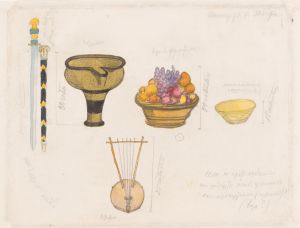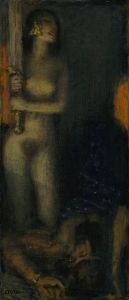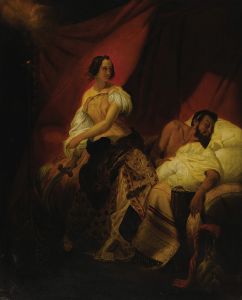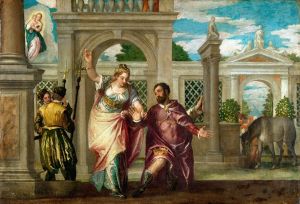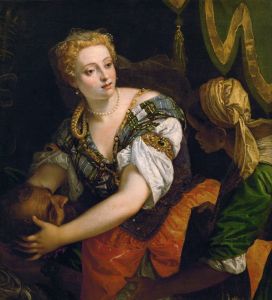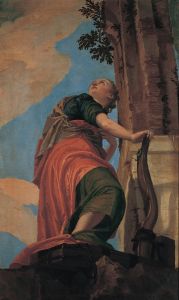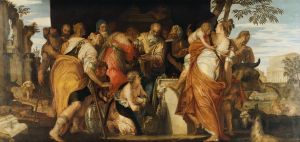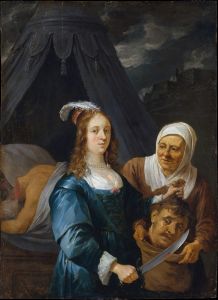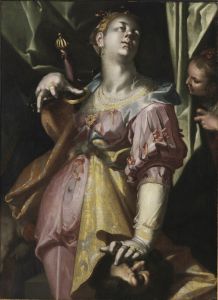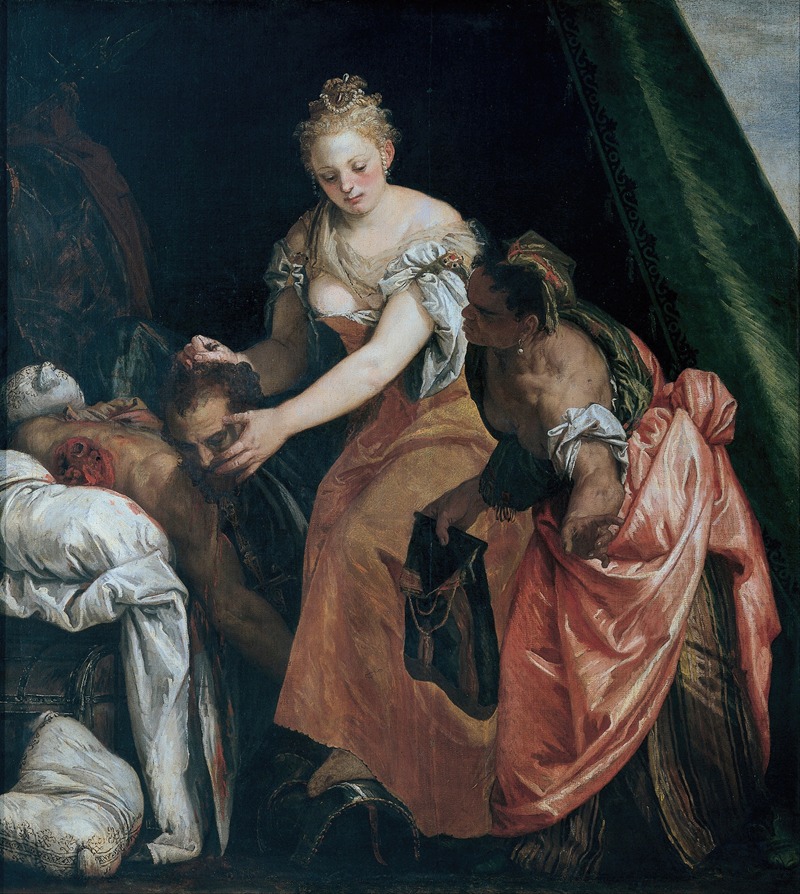
Judith and Holofernes
A hand-painted replica of Paolo Veronese’s masterpiece Judith and Holofernes, meticulously crafted by professional artists to capture the true essence of the original. Each piece is created with museum-quality canvas and rare mineral pigments, carefully painted by experienced artists with delicate brushstrokes and rich, layered colors to perfectly recreate the texture of the original artwork. Unlike machine-printed reproductions, this hand-painted version brings the painting to life, infused with the artist’s emotions and skill in every stroke. Whether for personal collection or home decoration, it instantly elevates the artistic atmosphere of any space.
Paolo Veronese, a prominent Italian Renaissance painter, is known for his grand and vibrant compositions, often depicting biblical and historical themes. Among his works, there is a painting titled Judith and Holofernes. This artwork portrays the biblical story of Judith, a Jewish heroine, who saves her people by beheading the Assyrian general Holofernes. The tale, originating from the deuterocanonical Book of Judith, has been a popular subject in art history, inspiring numerous artists across centuries.
Veronese's interpretation of the scene reflects his characteristic style, marked by rich color palettes, dramatic lighting, and meticulous attention to detail. In this painting, Judith is depicted as a composed and determined figure, emphasizing her courage and resolve. The moment captured is likely after the act of beheading, as Judith holds the severed head of Holofernes, a common motif in depictions of this story. The composition may include her maidservant, who traditionally assists Judith in carrying out her plan and escaping with the head.
The painting demonstrates Veronese's mastery of Venetian Renaissance techniques, particularly his use of color and texture to create depth and realism. His ability to convey the psychological tension of the narrative is evident in the expressions and body language of the figures. The luxurious fabrics and intricate details of the costumes are also characteristic of Veronese's style, reflecting the opulence of the period.
The exact date of the painting's creation is not definitively documented, but it is generally attributed to Veronese's mature period, during the mid to late 16th century. The painting is believed to have been commissioned for a private patron, as was common for works of this nature during the Renaissance.
Currently, the painting is housed in the Kunsthistorisches Museum in Vienna, Austria. It remains an important example of Veronese's ability to blend narrative drama with artistic elegance, contributing to his reputation as one of the leading painters of the Venetian Renaissance.
This artwork continues to be studied and admired for its artistic and historical significance, offering insight into both Veronese's oeuvre and the enduring appeal of the Judith and Holofernes story in Western art.






